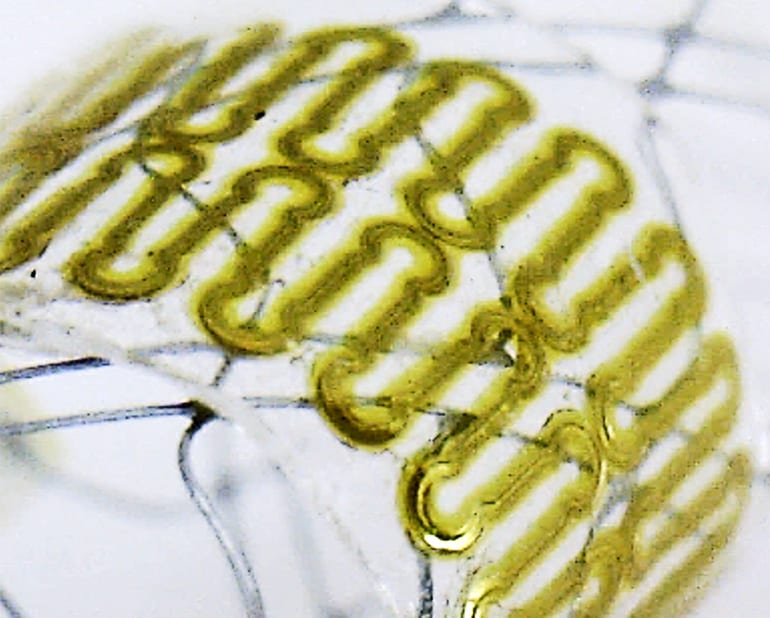A wireless sensor so small clinicians can implant it in the blood vessels of the brain could help evaluate healing of aneurysms. Aneurysms are bulges that can cause death or serious injury if they burst. The stretchable sensor, which operates without batteries, would wrap around stents or diverters implanted to control blood flow in vessels that aneurysms affect.
To reduce costs and accelerate manufacturing, researchers use aerosol jet 3D printing to create conductive silver traces on elastomeric substrates. The 3D additive manufacturing technique allows production of very small electronic features in a single step, without using traditional multi-step lithography processes in a cleanroom.
This close-up image shows details of the ultra-thin, low-profile sensor used for monitoring blood flow in the brain. (Credit: Georgia Tech) Researchers believe the device is the first demonstration of aerosol jet 3D printing to produce an implantable, stretchable sensing system for wireless monitoring. “The beauty […]
Case Study: How PepsiCo achieved 96% cost savings on tooling with 3D Printing Technology
Above: PepsiCo food, snack, and beverage product line-up/Source: PepsiCo PepsiCo turned to tooling with 3D printing...





0 Comments